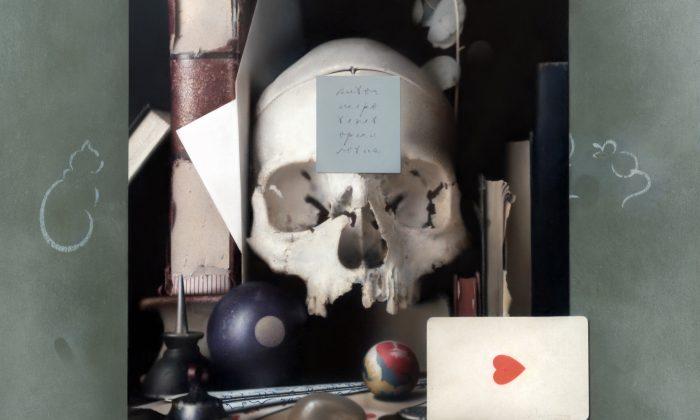This is part 3 of a 9-part series. To see the full series, see At the Confluence
The increasing prevalence of photography has fundamentally changed the way representational art is created and perceived in the modern day. At the Confluence examines how some of today’s artists have responded to the shift.
As far as painter and art instructor Anthony Waichulis is concerned, it is a realist painter’s prerogative to use photography in a painting—no chosen method should invalidate an artwork or artistic endeavor.
“For me a successful creative endeavor is about the manifestation of the idea through a process that is personally fulfilling,” he said in a phone interview. “It’s a simple equation—and if someone wants to include an optical element in the manifestation of their ideas, fine.”

When it comes to art students, however, Waichulis advises caution. He compares learning to draw with learning math.
“Sometimes handing a child a calculator right off the bat may hamper them from grasping the numbers and a deeper understanding of numbers and mathematical operations later on,” he said.
Learning to See
Waichulis is head instructor at Ani Art Academy Waichulis, the first of a group of free art schools dedicated to providing students with the visual vocabulary of realism—draftsmanship, anatomy, elements of perception, and various representational painting methods.
Waichulis describes his curriculum as “learning how to organize material on a flat surface” to create a convincing representation of reality. Basics include how to control the darkness of a pencil.
“Our program is based on a mimicry of nature; being able to explore how light defines [the] natural world, as well as understand how we perceive the natural world,” Waichulis said.
Students start with 2-D-to-2-D translation, learning to accurately copy drawings of accurate anatomical features, and then progress to 3-D-to-2-D translation, or drawing from life.

Despite all the technical rigor practiced at Ani, instructors don’t prescribe or suggest any aesthetic—in terms of content, style, and method, it’s all hands-free from graduation day. Painting in Photoshop is as valid as painting in oil.
“We eventually encourage all artists to explore all technology available to them, as long as those technologies aren’t robbing them of some developing skill set that would allow them to take full advantage of that same technology,” he said.
“The technology available to us becomes more robust every day. Many new generations of creatives are willing and excited to incorporate the technology of the day to manifest their ideas.”
Perception and Prejudgment
In his nonteaching career, Waichulis paints trompe l'oeil works of art. He chooses a variety of thematically related small objects and flat images, and composes them to create smooth, illusionistic oil paintings that toy with viewers’ depth perception. He references life, photos, digital references, and his imagination.
Because a great deal of his work seems like photorealism or hyperrealism, viewers who like photorealism praise its realness; and viewers who don’t, sometimes assume that it’s a lesser work because photos may have been used.
He cautions against trying to read into an artist’s process just by looking at the work, and dismissing it based on an assumption.

“If an artist uses a level of material organization to produce a very convincing depiction of nature that’s beyond what people may expect, people automatically assume there’s some mechanism in play making the job easier,” he said.
No matter what goes into a painter’s process, however, photography becomes an equalizer when it comes to sharing images on the Internet.
As Waichulis lamented on Facebook:
“You know—I work so hard to build a believable illusion of actual 3D objects—but when the final product is photographed it all flattens out all over again. It’s a shame—but it is the only way I could share it with many that cannot see it—to which I am then granted the ever-popular ‘Wow, looks like a photo.’ *Walks away sad with Charlie Brown posture ...*”
Tweet @EpochArts with your thoughts on the series using the hashtag #confluence
For more of Waichulis’s perspective, see his article “The ‘Pitfalls’ of reading about Photography ’Pitfalls’.”








Friends Read Free